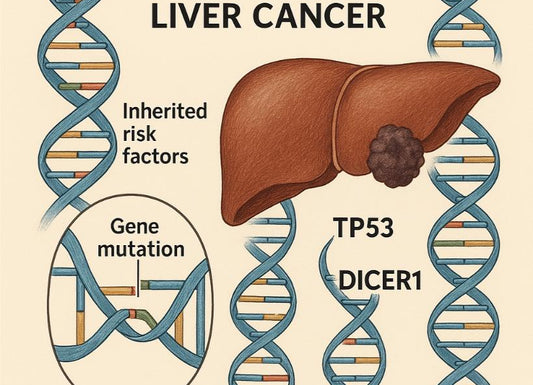Maximum Life After Kidney Transplant: How Long Can You Live?
 Written By
Jaclyn P. Leyson-Azuela, RMT, MD, MPH
Written By
Jaclyn P. Leyson-Azuela, RMT, MD, MPH

A kidney transplant can add years to your life. How many years maximum life after kidney transplant depends on several factors. Living donor kidneys last 15 to 20 years on average. On the other hand, deceased donor kidneys last about 8 to 12 years. Some patients live 30, 40,or even 50 years after a transplant.
Key Insights
-
Living donor kidneys last 15 to 20 years on average, deceased donor kidneys last about 8 to 12 years
-
Some patients live 36 to 46 years with one transplant
-
Younger patients without diabetes have better outcomes
-
Taking medications as prescribed prevents 85% of rejection episodes
-
Regular checkups catch problems early
-
Heart disease cause more deaths than kidney failure after transplant
What Factors Affect How Long a Kidney Transplant Lasts?
Your transplanted kidney's lifespan depends on donor type, your age, overall health, medication adherence, and lifestyle. These factors work together to determine how many years you'll have with your new kidney. Understanding them helps you make informed decisions about your care.
Your transplant team looks at dozens of variables when estimating graft survival. No two patients are alike, so your experience will be unique. Research shows clear patterns about what helps kidneys last longer.
Why Does Donor Age Matter?
Kidneys from younger donors work longer than those from older donors. Therefore, a kidney from a younger donor typically works better and lasts longer than the one from an older donor. Younger organs have less accumulated damage and more reserve capacity.
Research shows that the 5-year survival rate of living donors was about 88% and deceased donors was about 80% under 35 years of age. It lowers down to 82% and 68%, respectively, for those more than 65 years old.
Your transplant center weighs donor age with other factors. An older kidney might be your best option if it's available quickly and matches you well. Waiting longer for a younger kidney means more time on dialysis, which carries its own risks.
What Role Does Post-Transplant Care Play?
Your daily actions after transplant make a huge difference. Patients who follow care plans closely add years to graft survival. This includes taking medications on schedule, attending appointments, monitoring your health at home, and reporting changes quickly.
Medication adherence is the most critical factor you control. Patients who miss doses are three times more likely to experience rejection. Even occasional missed doses increase risk.
Your care routine should include:
-
Taking medications at the same time each day
-
Checking blood pressure daily
-
Recording weight and temperature
-
Tracking fluid intake
-
Logging symptoms or concerns
Regular lab work catches problems before they become serious. You may also use at-home urine strips to check your kidney status in between doctor’s consultation.
Nonetheless, your medical team will order blood tests frequently at first, then less often as time goes on. These tests measure kidney function, drug levels, and signs of rejection or infection.
How Do Comorbidities Influence Outcomes?
Diabetes poses particular challenges. High blood sugar damages small blood vessels in the kidney over time. Diabetic patients with hemoglobin A1C below 7% have better graft survival than those with poor control.
High blood pressure also threatens your transplant. Even mildly elevated pressure causes cumulative damage. Your target should be below 130/80 mmHg. Many patients need two or three medications to reach this goal.
Managing other conditions requires:
-
Working with specialists who coordinate with your transplant team
-
Checking blood sugar regularly if you have diabetes
-
Monitoring blood pressure at home
-
Following diet restrictions carefully
-
Exercising as your doctors recommend
-
Losing weight as needed
Heart disease needs special attention. Cardiovascular problems cause more deaths in transplant recipients than kidney failure. Report chest pain, shortness of breath, or unusual fatigue right away.

How Does Donor Type Impact Kidney Transplant Longevity?
As previously mentioned, living donor kidneys last longer, averaging 15 to 20 years. Deceased donor kidneys average 8 to 12 years. The difference comes from organ quality, minimal cold storage time, and optimal recipient preparation.
Your kidney's source significantly affects long-term outcomes. Both types can succeed, but statistics favor living donation when possible.
Why Do Living Donor Kidneys Last Longer?
Living donor kidneys perform better for several reasons. Surgeons can schedule the transplant at the best time when your health is optimal and the donor is fully prepared. This planned approach offers advantages emergency transplants cannot match.
Living donor kidneys spend minimal time outside the body. Surgical teams work in adjoining rooms, so the kidney transfers from donor to recipient in under an hour. Deceased donor kidneys might travel hundreds of miles and stay on ice for many hours. Every hour of cold storage damages the organ.
Living donation advantages include:
-
Shorter wait times mean less dialysis
-
Better tissue matching in many cases
-
Kidneys from healthy, screened donors
-
Minimal cold ischemia time
-
Possible transplant before dialysis starts
Data shows 5-year graft survival for living donor kidneys reaches 95%, compared to 85% for deceased donor kidneys. At 10 years, living donor kidneys have 70% survival versus 60% for deceased donor kidneys.
Related donors, especially siblings, often provide the best matches. However, unrelated living donors can also achieve excellent outcomes when tissue matching is good.
Are There Exceptions?
Not all living donor kidneys outlast all deceased donor kidneys. Individual variation matters more than averages. A young, perfectly matched deceased donor kidney might outlast a living donor kidney from an older, less compatible donor.
Factors that make deceased donor kidneys competitive:
-
Very young donor age
-
Perfect or near-perfect tissue matching
-
Short cold ischemia time
-
Excellent kidney function before donation
-
No donation after cardiac death
A study found that 44% of deceased donor recipients had graft survival in 20 years. Your health, medication adherence, and follow-up care matter more than donor type alone.
Extended criteria donors are deceased donors over age 60 or aged 50 to 59 with certain health conditions. Kidneys from these donors typically last 6 to 8 years. However, receiving one beats staying on dialysis for most patients.
Can Patients Live 30+ Years After a Kidney Transplant?
Yes, many patients have successful grafts lasting over three decades with careful care. Documented cases prove it's possible. Some recipients celebrate 40, 45, and even 50 years with one transplant. Long-term survivors share common habits you can learn from.
Thousands of patients demonstrate this success is achievable. Their stories offer hope and practical lessons for newer recipients.
Are There Documented Records of 40 to 50 Years Post-Transplant?
Medical literature includes many cases of exceptional graft longevity. A documented case of kidney transplantation surviving more than 40 years is a living donor recipient from a twin. Two of the recipients have functioning grafts for about 42.5 years.
These cases involved transplants from decades ago with less advanced drugs than we have today. Modern medications and monitoring may allow more patients to reach these milestones in the future.
Data shows patients who reach 10 years with good kidney function often have very long-lasting grafts, with 57% actuarial survival rate. Each year you keep your kidney working well improves your chances of reaching the next milestone.
What Helps People Reach These Milestones?
Long-term survivors share key traits. They take medications religiously, attend all appointments, maintain healthy lifestyles, and stay connected with transplant centers. Many describe transplant care as a top priority.
Long-term survivor characteristics:
-
Perfect or near-perfect medication adherence
-
Proactive communication with healthcare teams
-
Excellent control of blood pressure and blood sugar
-
Healthy body weight
-
Regular exercise
-
No smoking or recreational drug use
-
Limited alcohol consumption
-
Strong support systems
-
Positive attitudes about health
These patients educate themselves about transplant care. They read new research, ask questions during appointments, and stay informed about medications. This knowledge helps them spot problems early and make good decisions.
Many long-term survivors say transplant care becomes automatic over time. Taking medications at the same time daily becomes as routine as brushing teeth. Healthy eating replaces old habits. Regular exercise feels essential.
Young age at transplant helps but isn't required. Some patients who received kidneys in their 40s or 50s still reached 30-year survival. Good health at transplant time matters more than age. Avoiding complications in the first few years also predicts long-term success.

What Are the Risks and Complications Long-Term?
Risks include rejection, infections, cancer, heart disease, and medication side effects. While a kidney transplant dramatically improves your health compared to dialysis, it comes with ongoing challenges. Understanding risks helps you watch for warning signs and protect your health.
Your transplant team works to prevent or minimize complications. You need to know what to look for and when to get help. Early detection makes most problems easier to treat.
How Is Rejection Detected Early?
Rejection happens when your immune system attacks the transplanted kidney. It can occur anytime, though it's most common in the first year. Regular lab work detects most rejection episodes before you feel symptoms. Your creatinine level, which measures kidney function, rises when rejection begins. At-home kidney urine tests can detect proteins, which could also provide an overview of the kidney status. Nonetheless, it is not meant to diagnose but as a screening tool only..
Two main types exist. Acute rejection comes on suddenly and causes rapid kidney function changes. Chronic rejection develops slowly over months or years and causes gradual function decline. Both need treatment, but chronic rejection is harder to reverse.
Your medical team watches for rejection through:
-
Regular blood tests checking creatinine and drug levels
-
Urine tests looking for protein and blood
-
Kidney biopsies when blood work suggests problems
-
Ultrasound checking blood flow and kidney size
Treatment for acute rejection usually involves high-dose steroids given through an IV for three to five days. About 80-85% of acute rejection episodes respond to this treatment. Severe cases might need stronger medications like antithymocyte globulin.
Chronic rejection has no cure, but adjusting your drugs sometimes slows its progress. Your doctors may increase medication doses or add new drugs. Some patients eventually need another transplant when chronic rejection causes complete graft failure.
What Signs Should You Never Ignore?
Certain symptoms need immediate medical attention. Not every symptom means serious trouble, but err on the side of caution. Your transplant center has staff available 24/7.
Contact your transplant team right away if you have:
-
Fever above 100.5°F
-
Pain or tenderness over your transplanted kidney
-
Sudden weight gain of more than 3 pounds in a day
-
Significant swelling in legs, ankles, or face
-
Decreased urine output
-
Blood in urine
-
Severe headache that doesn’t respond to usual treatment
-
Chest pain or pressure
-
Shortness of breath
-
Signs of infection like cough, burning with urination, or wound drainage
Infection poses a constant risk because immunosuppressive drugs weaken your defenses. Common infections include urinary tract, respiratory, and wound infections. Your team gives you antibiotics to prevent certain infections, especially in the first few months.

Cancer risk increases after transplant. Immunosuppression prevents rejection but also reduces your body's ability to fight abnormal cells. Skin cancer is most common, requiring careful sun protection and regular skin checks. Some patients develop lymphoma or other internal cancers.
Cancer screening recommendations:
-
Annual skin exams by dermatologist
-
Colonoscopy starting age 45 or earlier with risk factors
-
Mammograms and Pap smears for women following standard guidelines
-
Prostate screening for men based on age and risk
-
Annual chest X-rays or low-dose CT scans with smoking history
Heart disease causes more deaths in transplant recipients than kidney failure. Your risk factors include the same things affecting everyone, plus effects from immunosuppressive drugs. Some medications raise cholesterol or blood pressure.
Protecting your heart requires controlling blood pressure, managing cholesterol, maintaining healthy weight, exercising regularly, and not smoking. Your medical team prescribes cholesterol medications for most recipients. Taking statins reduces your risk of heart attack and stroke.
How Can Patients Maximize Graft Longevity and Life After Transplant?
Regular follow-up, medication adherence, healthy lifestyle, and quick attention to changes all extend graft life. You have significant control over transplant outcomes through daily choices and habits. While you cannot eliminate all risks, you can reduce them substantially.
Think of transplant care as a partnership with your medical team. They provide expertise and treatment. You provide daily maintenance that keeps everything running smoothly.
What Foods and Activities Are Recommended or Discouraged?
Your diet after transplant should focus on fresh fruits, vegetables, whole grains, lean proteins, and low-fat dairy. Avoid excess salt, sugar, and saturated fat. Drink six to eight glasses of water daily unless your doctor says otherwise.
Specific diet guidelines:
-
Limit sodium to less than 2,000 mg per day
-
Choose lean meats and fish over fatty cuts
-
Eat plenty of fruits and vegetables
-
Avoid grapefruit and grapefruit juice, which interferes with immunosuppressants
-
Limit alcohol to one drink per day for women or two for men
-
Avoid raw or undercooked meat, eggs, and seafood
-
Wash all produce thoroughly
-
Skip unpasteurized dairy products and soft cheeses
Some medications interact with foods. Tacrolimus and cyclosporine levels change if you eat grapefruit or pomegranate. Your pharmacist can provide a complete list of food interactions. Ask at every appointment, especially if your drugs change.
Exercise benefits your transplant in multiple ways. It controls blood pressure, maintains healthy weight, improves mood, strengthens bones, and reduces heart disease risk. Start slowly after surgery and gradually increase activity as you heal.
Safe activities after transplant:
-
Walking, starting with short distances
-
Swimming after your incision heals completely
-
Cycling on flat terrain or stationary bikes
-
Light weight training with your doctor’s approval
-
Yoga or gentle stretching
-
Gardening and household chores
Avoid contact sports like football, hockey, or martial arts. A blow to your transplanted kidney could cause serious damage. Skip activities with high fall risk until you feel steady. Some medications affect balance or coordination.
Sun protection is critical because immunosuppression increases skin cancer risk. Wear sunscreen with SPF 30 or higher every day, even in winter. Choose protective clothing including wide-brimmed hats and long sleeves when outdoors. Seek shade during peak sun hours.

How Can Patients Maintain Social and Work Life?
Most transplant recipients return to work and normal activities within two to three months. Your energy levels will improve dramatically compared to dialysis. This improvement lets you reconnect with hobbies, relationships, and career goals.
Returning to work takes planning. Talk with your employer about your needs before you go back. You might benefit from a gradual return, starting part-time and building hours as you gain stamina. Flexible scheduling helps you attend medical appointments.
Tips for balancing work and transplant care:
-
Keep medications at work in case you forget doses at home
-
Set phone alarms to remind you of medication times
-
Pack healthy lunches to stick to your diet
-
Take breaks to rest if you feel tired
-
Discuss your immune status with occupational health if your job involves infection risk
-
Schedule appointments early morning or late afternoon when possible
Social activities matter for mental health and quality of life. You can travel, attend events, and spend time with friends and family. Take precautions to protect yourself from infections, especially in the first year when immunosuppression is highest.
Guidelines for safe social activities:
-
Avoid crowds during flu season or disease outbreaks
-
Wash your hands frequently
-
Keep hand sanitizer with you
-
Stay away from people who are obviously sick
-
Get recommended vaccines, but avoid live vaccines
-
Wear masks in healthcare settings or when advised
Travel is possible after transplant. Wait at least three months and get clearance from your team first. Bring extra medications in case of delays. Carry a letter from your doctor explaining your transplant and medications. Research healthcare facilities at your destination.
International travel takes additional planning. Some immunosuppressive drugs need refrigeration. Certain vaccines are necessary for travel but might not be safe for you. Your transplant center can help you prepare and may adjust medications for trip timing.
Mental health deserves attention alongside physical health. Depression and anxiety are common after major medical events. Support groups connect you with others who understand your experience. Professional counseling helps some patients adjust. Ask for help if you feel overwhelmed or sad.
Related Resources
What to Know About a Kidney Doctor, Kidney Disease, And Treatment?
What Is a Kidney Cleanse and Is It Necessary?
Quick Summary Box
-
Average graft survival: 15 to 20 years for living donor kidneys, 8 to 12 years for deceased donor kidneys
-
Many patients reach 30+ years with proper care and medication adherence
-
Key factors: donor age and type, recipient health, medication compliance, lifestyle choices
-
Most important action: take medications exactly as prescribed
-
Regular monitoring catches rejection and complications early
-
Control blood pressure below 130/80 mmHg and blood sugar if diabetic
-
Exercise regularly, eat healthy, avoid smoking, limit alcohol
-
Protect yourself from infections and get recommended vaccines
-
Use sun protection daily to reduce skin cancer risk
-
Contact your transplant team right away for fever, pain, swelling, or decreased urine output
-
Most recipients return to work and normal activities within two to three months
References
Auten, A. A., Beauchamp, L. N., Joshua Taylor, & Hardinger, K. L. (2013). Hidden Sources of Grapefruit in Beverages: Potential Interactions with Immunosuppressant Medications. Hospital Pharmacy, 48(6), 489–493. https://doi.org/10.1310/hpj4806-489
Chan, L. W., Irish, G. L., Goh, T. L., Alnasrallah, B., Davies, C. E., Sypek, M. P., Clayton, P. A., & Collins, M. G. (2025). Outcomes of Living Kidney Donors Following Donor Nephrectomy in Aotearoa New Zealand. Kidney International Reports, 10(3), 762–771. https://doi.org/10.1016/j.ekir.2024.11.1362
Chapter 5: Blood pressure management in kidney transplant recipients (CKD T). (2012). Kidney International Supplements, 2(5), 370–371. https://doi.org/10.1038/kisup.2012.55
Halkos, M. E., Puskas, J. D., Lattouf, O. M., Kilgo, P., Kerendi, F., Song, H. K., Guyton, R. A., & Thourani, V. H. (2008). Elevated preoperative hemoglobin A1c level is predictive of adverse events after coronary artery bypass surgery. The Journal of Thoracic and Cardiovascular Surgery, 136(3), 631–640. https://doi.org/10.1016/j.jtcvs.2008.02.091
Hassanein, M., & Augustine, J. J. (2020). Chronic Kidney Transplant Rejection. PubMed; StatPearls Publishing. https://www.ncbi.nlm.nih.gov/books/NBK549762/
Helve, S., Helanterä, I., Laine, M., Nieminen, T., Finne, P., & Helve, J. (2024). Trends and Specific Causes of Cardiovascular Mortality after Kidney Transplantation in Finland. Clinical Journal of the American Society of Nephrology, 19(3), 355. https://doi.org/10.2215/CJN.0000000000000360
Lentine, K. L., Lam, N. N., & Segev, D. L. (2019). Risks of Living Kidney Donation: Current State of Knowledge on Outcomes Important to Donors. Clinical Journal of the American Society of Nephrology: CJASN, 14(4), 597–608. https://doi.org/10.2215/CJN.11220918
Lentine, K. L., Smith, J. M., Miller, J. M., Bradbrook, K., Larkin, L., Weiss, S., Handarova, D. K., Temple, K., Israni, A. K., & Snyder, J. J. (2023). OPTN/SRTR 2021 Annual Data Report: Kidney. American Journal of Transplantation, 23(2), S21–S120. https://doi.org/10.1016/j.ajt.2023.02.004
Lindenfeld, J., Miller, G. G., Shakar, S. F., Zolty, R., Lowes, B. D., Wolfel, E. E., Mestroni, L., Page, R. L., & Kobashigawa, J. (2004). Drug Therapy in the Heart Transplant Recipient. Circulation, 110(25), 3858–3865. https://doi.org/10.1161/01.cir.0000150332.42276.69
Longer-term risks of a kidney transplant. (n.d.). Organ Transplantation - NHS Blood and Transplant. https://www.nhsbt.nhs.uk/organ-transplantation/kidney/benefits-and-risks-of-a-kidney-transplant/risks-of-a-kidney-transplant/longer-term-risks-of-a-kidney-transplant/
Matas, A. J., Gillingham, K. J., Abhinav Humar, Raja Kandaswamy, David E.R. Sutherland, Payne, W. D., Dunn, T. B., & Najarian, J. S. (2008). 2202 Kidney Transplant Recipients with 10 Years of Graft Function: What Happens Next? American Journal of Transplantation, 8(11), 2410–2419. https://doi.org/10.1111/j.1600-6143.2008.02414.x
Naik, R. H., & Shawar, S. H. (2023). Renal Transplantation Rejection. PubMed; StatPearls Publishing. https://www.ncbi.nlm.nih.gov/books/NBK553074/
Ojo, A. O. (2005). Expanded Criteria Donors: Process and Outcomes. Seminars in Dialysis, 18(6), 463–468. https://doi.org/10.1111/j.1525-139x.2005.00090.x
Poggio, E. D., Augustine, J. J., Arrigain, S., Brennan, D. C., & Schold, J. D. (2021). Long‐term kidney transplant graft survival—Making progress when most needed. American Journal of Transplantation, 21(8). https://doi.org/10.1111/ajt.16463
Sánchez-Escuredo, A., Barajas, A., Revuelta, I., Blasco, M., Cofan, F., Esforzado, N., Ricart, M. J., Torregrosa, V., Campistol, J. M., Oppenheimer, F., & Diekmann, F. (2015). Kidney transplant from a monozygotic twin living donor with no maintenance immunosuppression. Nefrología (English Edition), 35(4), 358–362. https://doi.org/10.1016/j.nefroe.2015.02.004
Sprangers, B., Nair, V., Launay-Vacher, V., Riella, L. V., & Jhaveri, K. D. (2017). Risk factors associated with post–kidney transplant malignancies: an article from the Cancer-Kidney International Network. Clinical Kidney Journal, 11(3), 315–329. https://doi.org/10.1093/ckj/sfx122
Tan, J., Mabood, A., Kee, T., Ho Yee Tiong, Taqi Toufeeq Khan, Ihab El-Madhoun, Ishida, H., Sanjiv Jasuja, Ahmad, G., Sydney C.W. Tang, & Anantharaman Vathsala. (2023). Deceased donor kidney transplant policies in Asia – implications on practice and recommendations for the future. The Lancet Regional Health - Europe, 100312–100312. https://doi.org/10.1016/j.lansea.2023.100312
World Health Organization. (2025). Sodium reduction. Who.int; World Health Organization. https://www.who.int/news-room/fact-sheets/detail/sodium-reduction
Ziaja, J., Skrabaka, D., Owczarek, A. J., Widera, M., Król, R., Aureliusz Kolonko, & Andrzej Więcek. (2024). Long-Term Results of Kidney Transplantation in Patients Aged 60 Years and Older. Journal of Clinical Medicine, 14(1), 78–78. https://doi.org/10.3390/jcm14010078

Jaclyn P. Leyson-Azuela, RMT, MD, MPH, is a licensed General Practitioner and Public Health Expert. She currently serves as a physician in private practice, combining clinical care with her passion for preventive health and community wellness.



